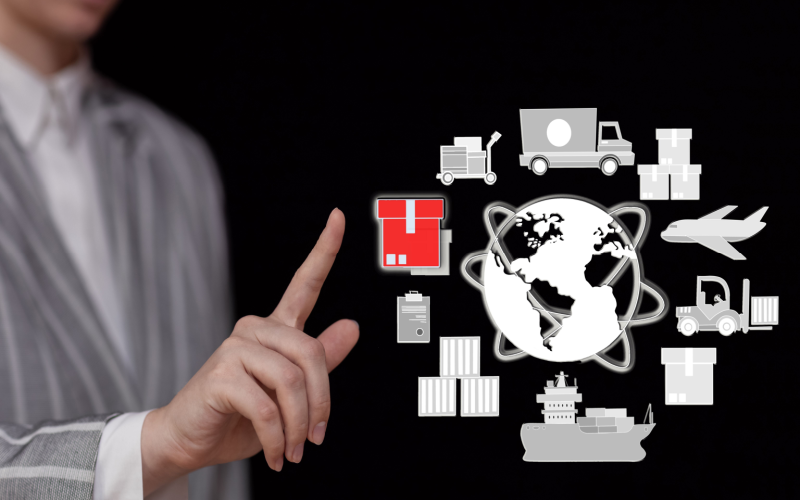Nucleus Research Calls Control Towers Essential — and Names Blue Yonder a Leader
Nucleus Research recently released its Control Tower Technology Value Matrix 2022, a report that looks at the competitive landscape for control tower solutions and assesses the technology vendors. Blue Yonder was gratified to be named a “Leader” in the Nucleus report, based on the capabilities of our Luminate® Control Tower solution.
Nucleus Research Manager Isaac Gould notes that control towers are becoming an essential capability as organizations navigate ongoing supply chain disruptions. “Today’s fast-paced and uncertain environment means organizations need the ability to quickly align upstream and downstream activities from a single user interface or unified platform,” he says. “We’re seeing an increased demand for comprehensive end-to-end control towers that provide visibility and control from the supplier’s suppliers to last-mile delivery.”
According to Nucleus, Leaders in the Value Matrix are able to deliver advanced functionality –including artificial intelligence (AI) and machine learning (ML) for risk detection, prescriptive automation and improved forecast accuracy – at scale, without sacrificing ease of use.
In naming Blue Yonder a leader, Nucleus wrote, “Blue Yonder’s Luminate Control Tower solution enables customers with a complete supply chain view, which provides prescriptive insights and automated resolutions across a business’s supply chain, incorporating internal, partner, and third-party data streams. Blue Yonder helps C-level executives manage corporate objectives, including revenue growth, margin improvements, inventory benefits, transportation and labor benefits, and global sustainability initiatives.”
I spoke with Gould about the Value Matrix, the process behind it and some key trends that Nucleus is seeing today.
Why did Nucleus devote an entire report to control towers, which represent a relatively new capability?
It really has to do with the disruptions that we’ve seen in the market for the past couple of years, including fluctuating demand, fluctuating commodity pricing, stock shortages, labor shortages, and delays in transportation. All these issues are really disrupting the operations of global supply chains. What’s happening is that companies lack the visibility to predict some of these issues in advance. Finding out about a stockout at the very last moment can be devastating in today’s competitive environment.
We’ve seen that companies that have adopted control tower functionality are able to identify early disruption signals, whether they’re on the demand side or on the supply side. They can inform all functional areas, enabling them to align the entire supply chain. They can adjust production or transportation plans as needed to ensure continuity.
In studying all the control tower solutions that are out there, how does Nucleus conduct its assessment?
For all our value matrices, Nucleus differentiates itself through customer conversations. When we put together a Value Matrix, it’s always based on firsthand comments and interviews with the end users themselves. There’s a lot of marketing out there, and vendors can tout their strengths and capabilities. But at the end of the day, it’s about whether or not the customer is seeing results.
What we found in our customer interviews is that AI and ML are extremely important. If control towers include those capabilities – and if they’re spanning supply chain planning, transportation management and warehouse management – then customers are realizing a lot of value.
If companies were using just Excel spreadsheets, it would take days or weeks to calculate the impact of a blocked transportation lane. No one has time for that. AI and ML take that manual work away from planners and analysts, enabling a fast response that’s driven by data.
The Leaders in the Value Matrix are not only allowing their customers to leverage AI and ML to make decisions, but they’re also supporting an autonomous response. In our customer interviews, the organizations realizing the highest return are using predictive analytics to move inventory, access transportation resources, and otherwise take correction actions with little to no human intervention.
What trends are you seeing today in control tower functionality? What does the future look like?
Control tower vendors are focusing their development efforts on the last mile of delivery. That’s where their customers need to compete with Amazon Prime, and it’s where things can easily go wrong. That’s an area that’s very locally based. Companies need a granular view of who the shippers are in any given area, and what partnership opportunities exist there to mitigate disruptions. That local landscape looks a lot different than, say, rail or ocean shipping. Companies need to get better at managing that landscape, and control towers represent a clear solution.
The other big area of investment – for both control tower providers and their customers – is managing multiple tiers of suppliers. If you’re using predictive analytics to drive an autonomous action like moving inventory, that’s not an isolated decision. It’s going to impact multiple execution steps and multiple supplier tiers. Control towers need to span the entire supplier network to make their biggest impact. It’s not just the technology connections either, it’s about bringing more people together to truly collaborate on disruption management. The leaders in control tower are enabling that collaboration.
Is Santa Claus using a control tower?
Given the scale, breadth and depth of Santa’s supply chain challenge – and the extreme time pressure he’s facing – I can say with confidence that Santa Claus is using a control tower solution. It’s ideally suited to his need to identify disruptions and keep the entire operation on track. I don’t see how he could accomplish his mission without one.
Watch Blue Yonder’s video to “Learn how Santa Delivers Christmas with his Head Elf Blue.”

